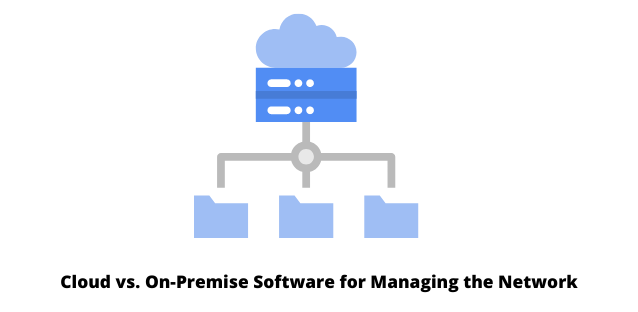Network management is essential for maintaining a business’s digital infrastructure, meeting the needs of users and even ensuring adequate security. While conventional methods of network management continue to maintain some key advantages, migrating to the cloud may also be worthwhile. Businesses would do well to weigh their options before deciding how best to manage their network.
What is Cloud Computing?
Cloud computing is a broad term used to describe data storage, software applications and other digital services that originate off-site. Cloud computing can alleviate many of the limitations inherent to an on-premise network which can decrease overhead and free workers to access essential data and software from anywhere.
About On-Premise Software
On-premise software requires the data, terminal and even the user who is working to monitor or manage the network to be physically present at the worksite. While an on-premise approach is more conventional, there are still several key benefits to be had by keeping a network management effort entirely in-house.
Key Differences of On-Premise vs. Cloud
Generally speaking, cloud computing provides superior flexibility, reduced overhead and superior convenience while an on-premise solution entails better security as well as complete control over the software and digital infrastructure.
Businesses may also consider a mix of both cloud-computing software as a service (SaaS) options and conventional software that will require users to be physically present in order to access the system. From network security to meet the needs of employees, there are several factors that should be considered carefully in order to determine the optimal choice.
Which is Better?
- For businesses who may be unable to provide the IT know-how, training and other resources needed to manage their own network, cloud-based solutions offer a clear advantage. SaaS minimizes the need for technical knowledge.
- Organizations that have only limited funds to invest in their digital infrastructure also find the cloud to be an ideal choice. Cloud-based solutions negate the need to purchase equipment and offer a streamlined setup and configuration process.
- In situations where digital security is the primary concerns, on-premise options are the clear winner. While cloud-based services and solutions are typically very secure, migration may involve a level of risk that businesses are just not equipped to deal with.
- Lacking complete control over software settings and network management options can also be a cause for concern. Users who are interested in having the final say over their network management efforts or who wish to retain full control of their digital infrastructure may be better served by conventional resources.
There are many features of cloud network monitoring solutions that may allow businesses to streamline their operations and reduce their overhead and operational costs.
Migrating to the cloud is often the optimal solution for businesses that lack the staff, technical expertise and other resources that may be needed in order to manage their network, safeguard their data or curate their digital infrastructure. While there are still a few workflow processes that benefit from an on-premise approach, cloud-based computing is not an asset that businesses can afford to overlook.

